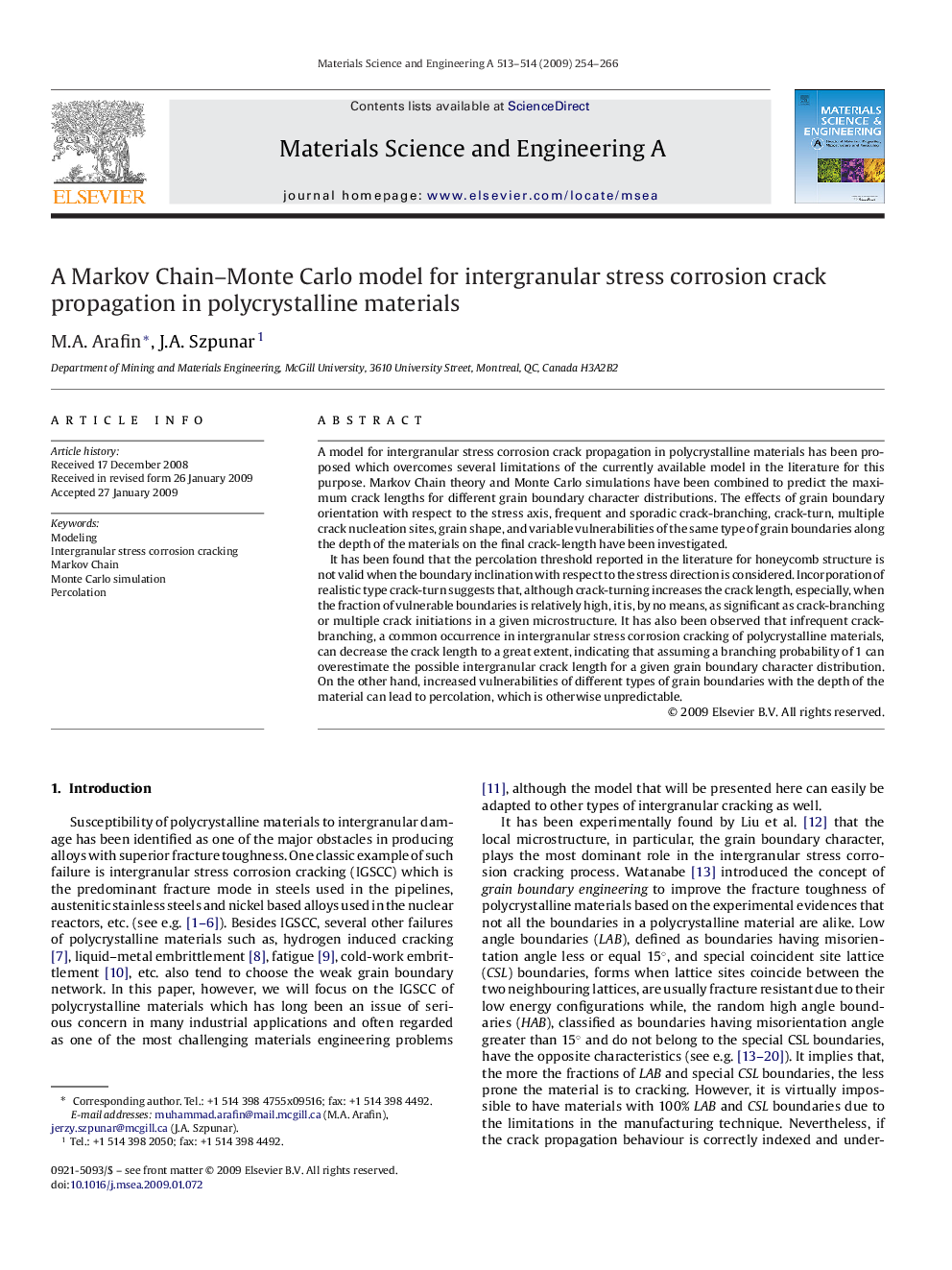| Article ID | Journal | Published Year | Pages | File Type |
|---|---|---|---|---|
| 1580489 | Materials Science and Engineering: A | 2009 | 13 Pages |
A model for intergranular stress corrosion crack propagation in polycrystalline materials has been proposed which overcomes several limitations of the currently available model in the literature for this purpose. Markov Chain theory and Monte Carlo simulations have been combined to predict the maximum crack lengths for different grain boundary character distributions. The effects of grain boundary orientation with respect to the stress axis, frequent and sporadic crack-branching, crack-turn, multiple crack nucleation sites, grain shape, and variable vulnerabilities of the same type of grain boundaries along the depth of the materials on the final crack-length have been investigated.It has been found that the percolation threshold reported in the literature for honeycomb structure is not valid when the boundary inclination with respect to the stress direction is considered. Incorporation of realistic type crack-turn suggests that, although crack-turning increases the crack length, especially, when the fraction of vulnerable boundaries is relatively high, it is, by no means, as significant as crack-branching or multiple crack initiations in a given microstructure. It has also been observed that infrequent crack-branching, a common occurrence in intergranular stress corrosion cracking of polycrystalline materials, can decrease the crack length to a great extent, indicating that assuming a branching probability of 1 can overestimate the possible intergranular crack length for a given grain boundary character distribution. On the other hand, increased vulnerabilities of different types of grain boundaries with the depth of the material can lead to percolation, which is otherwise unpredictable.
